Conqueror: Final Conquest simulates the pressure of leading a vast empire
It’s not often that we see a game that is designed and produced in the Middle East (except, of course, probably the most important board game ever made; Chess, which originated in either India or Persia). Conqueror: Final Conquest is a recent release from Mohamed Al Qadi and his company, Cation Arts.
Despite its bold title and epic ambitions, Conqueror: Final Conquest is a relatively lightweight experience that really encourages players to manage their supply lines closely, expand their territory rapidly and take bold decisions in relation to battles. The catch, however, is that the action phase is done in real-time, meaning that the larger your empire, the faster your decisions must be.
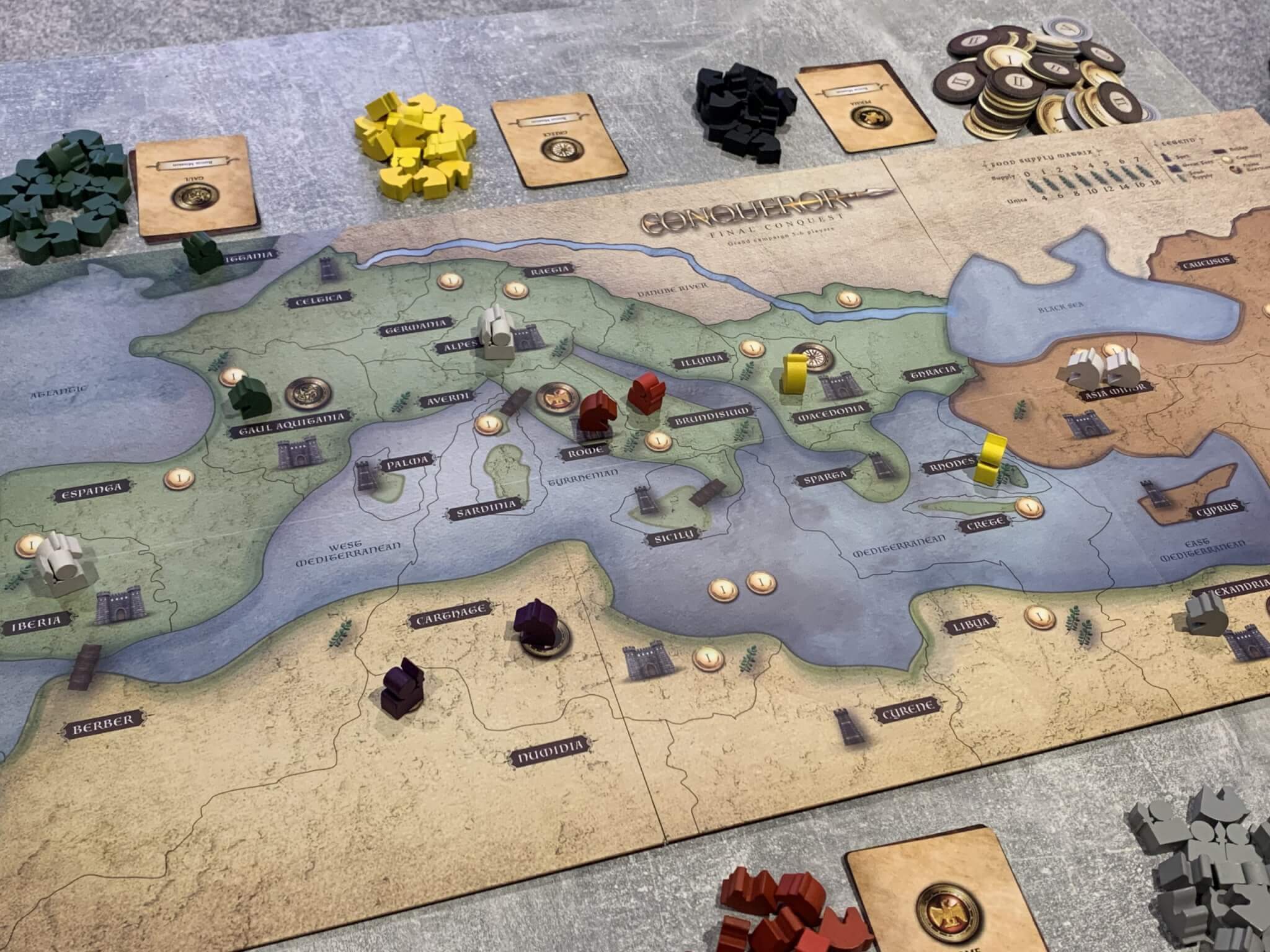
During set up, the players will choose one side of the board or the other (which scales for player count) and then select the great empire they wish to represent. There’s no difference between each empire on the board, but each side has access to different objectives and heroes that reflect their real ambitions and great leaders. Some nations are not used at certain player counts, again ensuring balance.
Each empire has a starting setup that will generally position it in a historically accurate location, with two infantry and one cavalry unit, as well as control of some grain and/or coin. During the first phase of each turn, players draw coins for each coin shown on states they control, whilst the number of grain tokens they hold indicates their supply line capacity — which dictates how many armies they can maintain.
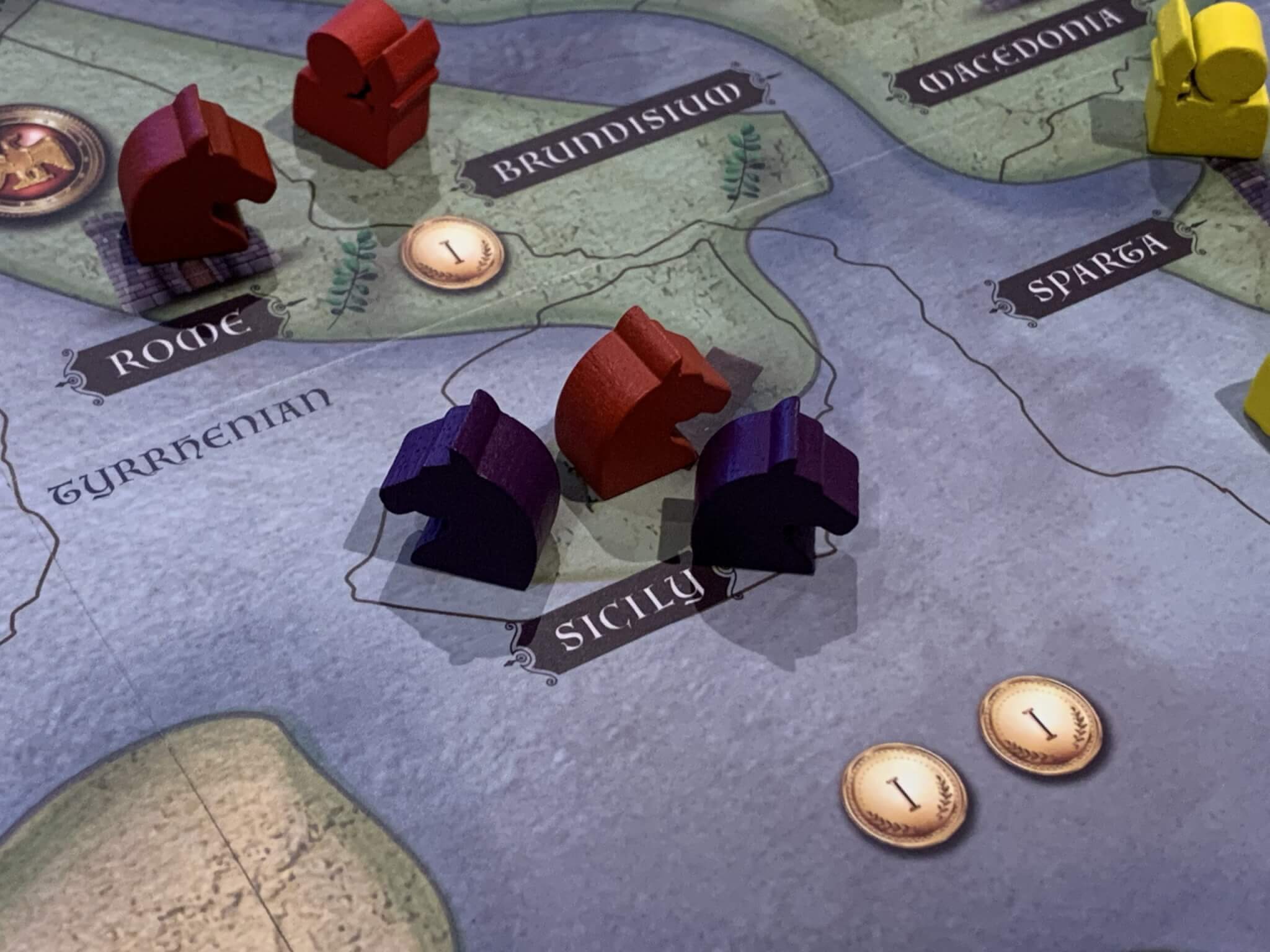
A cavalry unit is worth two strength in battle, whilst an infantry unit one, and new units can be recruited based on large and small forts that also show on the map, A small fort simply generates one infantry, whilst a large fort provides either two infantry or one cavalry of the players choice. Because cavalry takes up only one supply line value but has two strength, it’s the better choice in most cases.
The way in which Conqueror: Final Conquest tends to work is that the players begin with room to expand their own empire a little before coming into contact with each other — although some players will force the issue. A few “neutral” armies are spawned on the board to create bottlenecks and hotspots, and aside from a few classic rivalries (Carthage and Rome, Persia and Egypt for example) the game will be balanced for at least two or three turns.
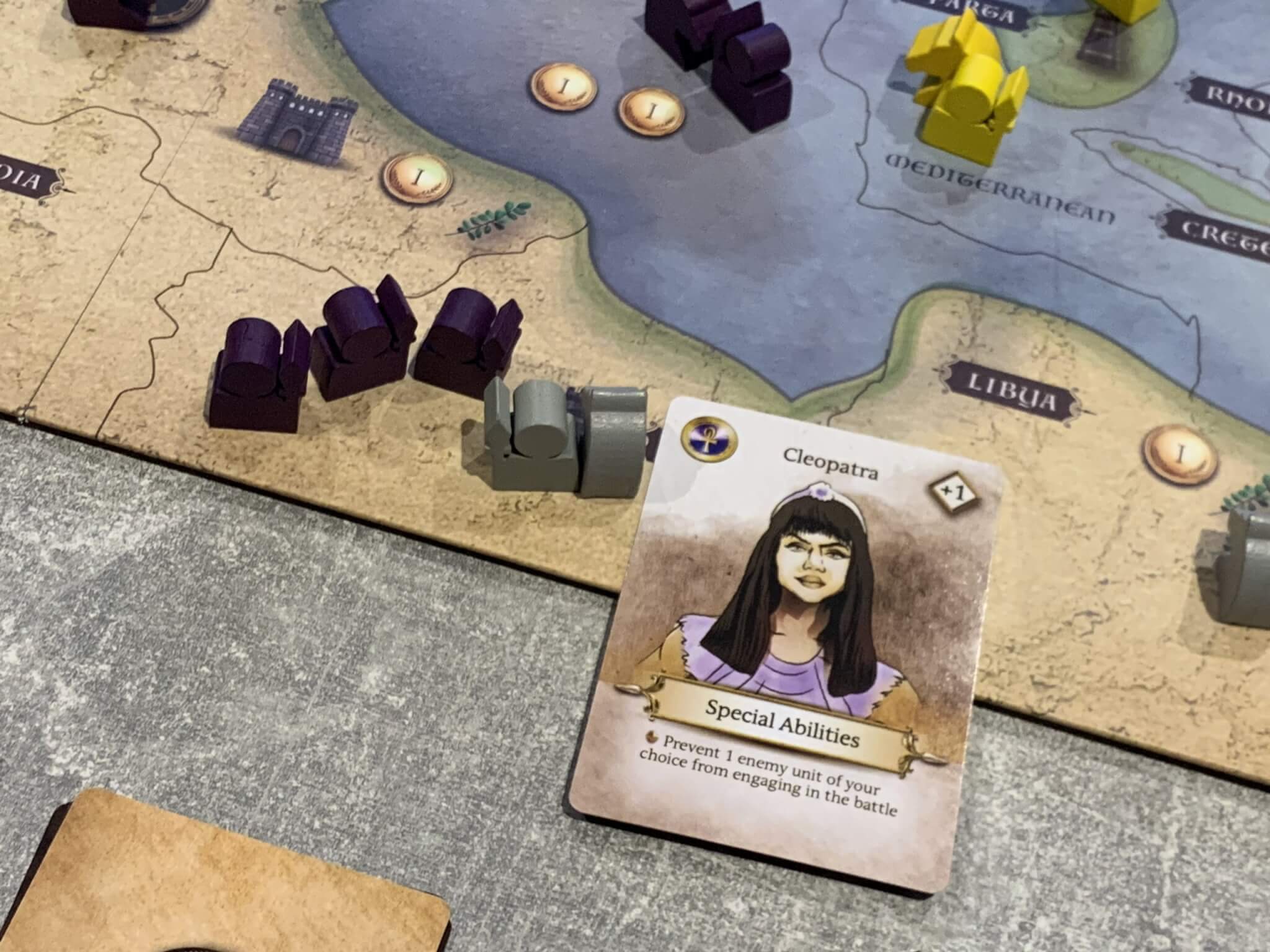
The real-time aspect really comes into its own when the simple expansion is done and players begin to share borders with each other. This is because each turn is split into two phases, followed by the resolution of combat if needed. The first phase, drawing income, is simple and just involves taking coins, checking supply lines and recruiting as needed.
The second phase, actions, is done with the assistance of an included sand timer. Each player has until the sand runs out to move their troops, recruit heroes (which are bought with gold, and can only be used once each, when bought) and finalise their turn. The sand runs for about a minute, which seems like an age during early turns, but it’s a tall order when you have an empire spanning a broad section of the map and perhaps bordering two or even three opponents — there’s no doubt that Conqueror: Final Conquest is at its most thrilling with more players.
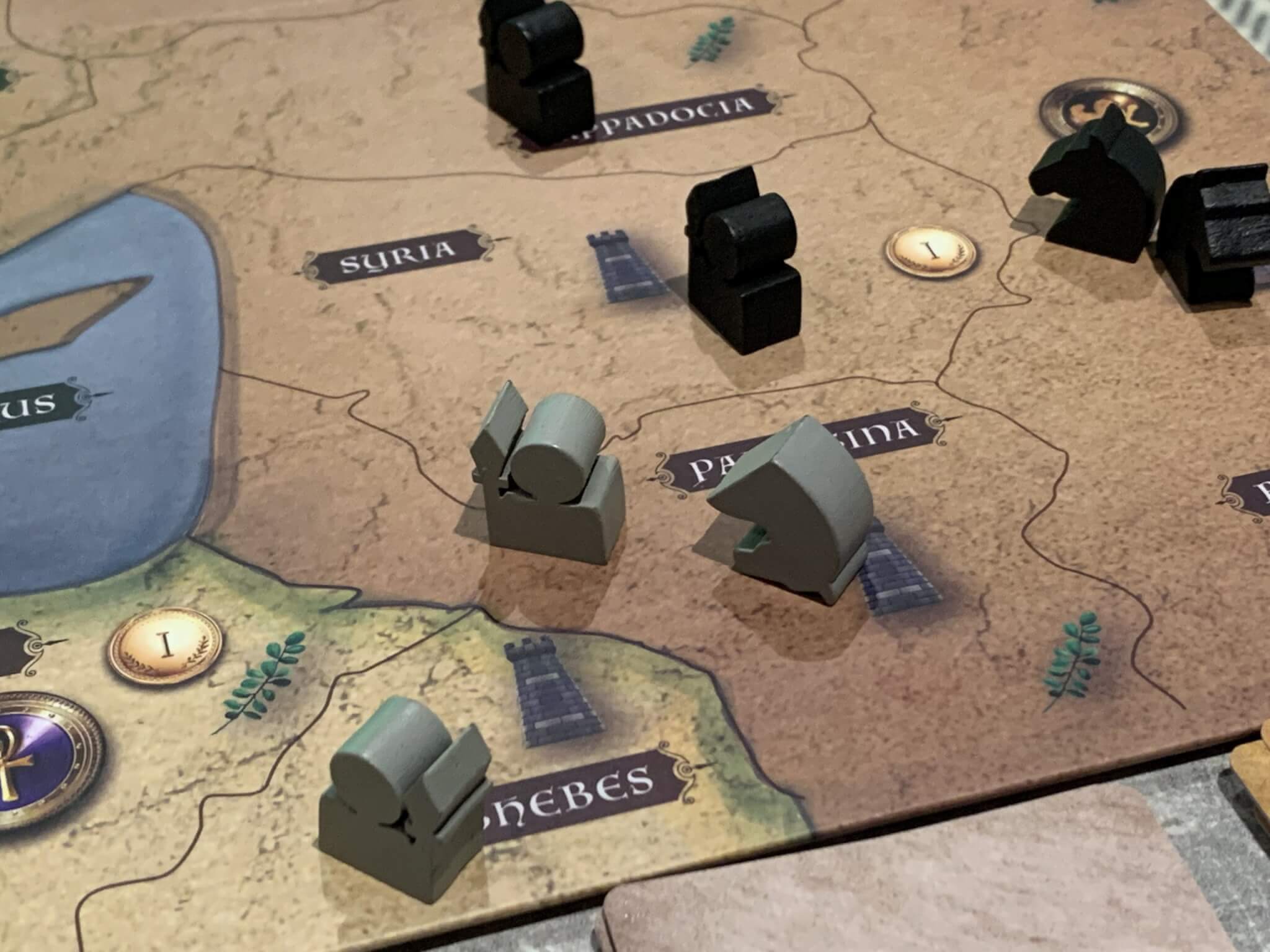
Mistakes or failures to act are punishable by mutiny, which is fairly extreme. When a player doesn’t act, the other players (based on a set order) can bid to bribe one of their armies, turning it over to them and potentially control of the area in which it stands. This is brutal and unappealing to a lot of players, but because the gameplay is otherwise light, I can kind of understand why it’s there.
Let me try and explain… Conqueror: Final Conquest presents players with a map of the known world, as it was in about 300 BC. The way in which expansion and recruitment take place is much, much lighter and more straightforward than it is in grand strategy games that share the theme, but weave in much more complex systems. Conqueror: Final Conquest counters this with its pace, making it perhaps the fastest grand strategy style game you’re ever likely to play.
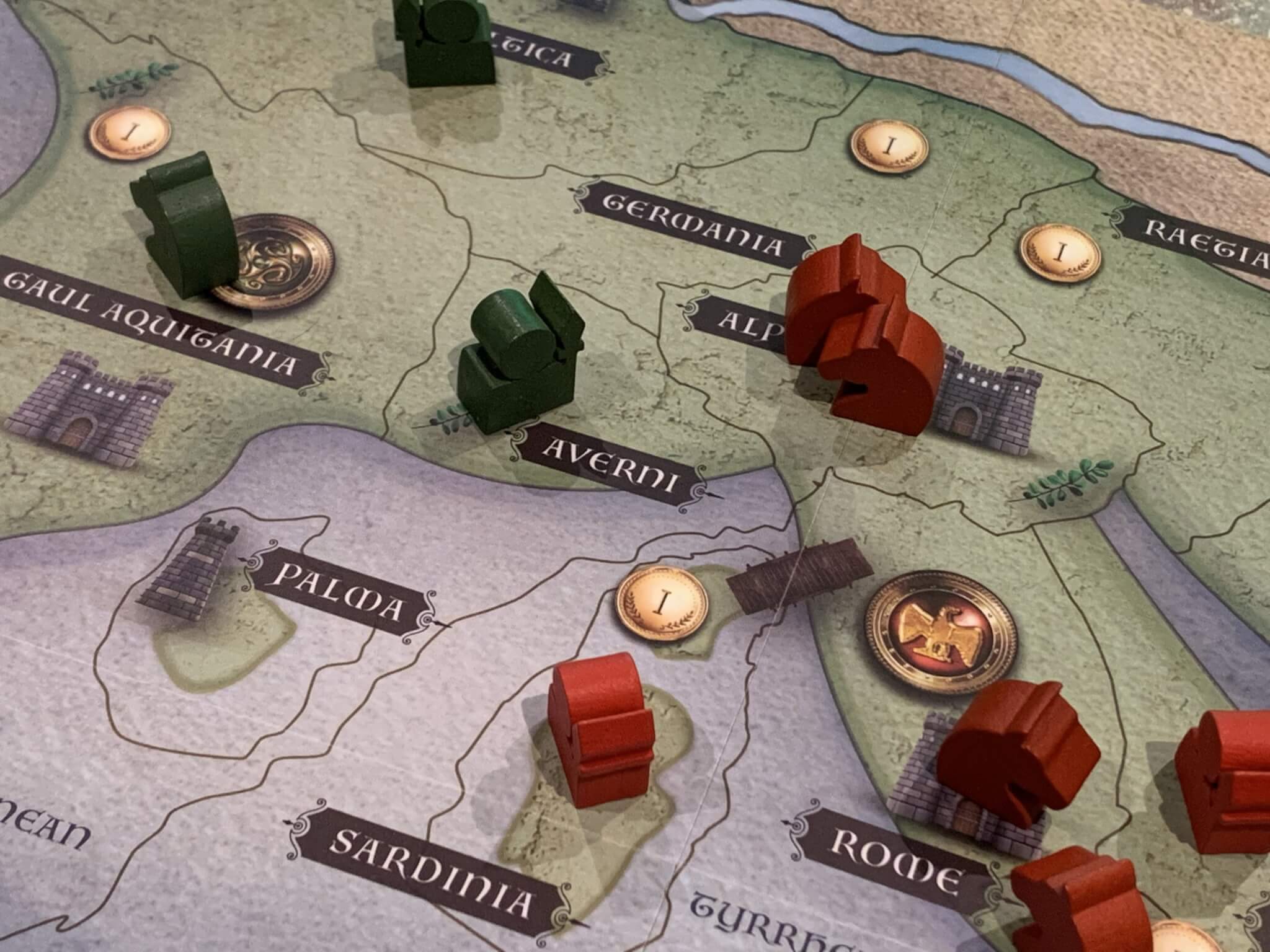
Obviously, it’s a simple thing to take out the timer – and when playing with kids, or maybe new players – you may wish to. For your average game night however, I’d suggest you keep it in. What starts as quite a clunky, divisive and frustrating system soon becomes an interesting — but undoubtedly wonky — balancing mechanic.
A player who can think fast and act instinctively will almost always have an advantage over those who are naturally ponderous. Still, as the empires expand and meet in battle, with ever-larger armies, the partially deterministic combat becomes harder to calculate, and with multiple fronts threatened, the more success you have, the more you’ll have to think about.
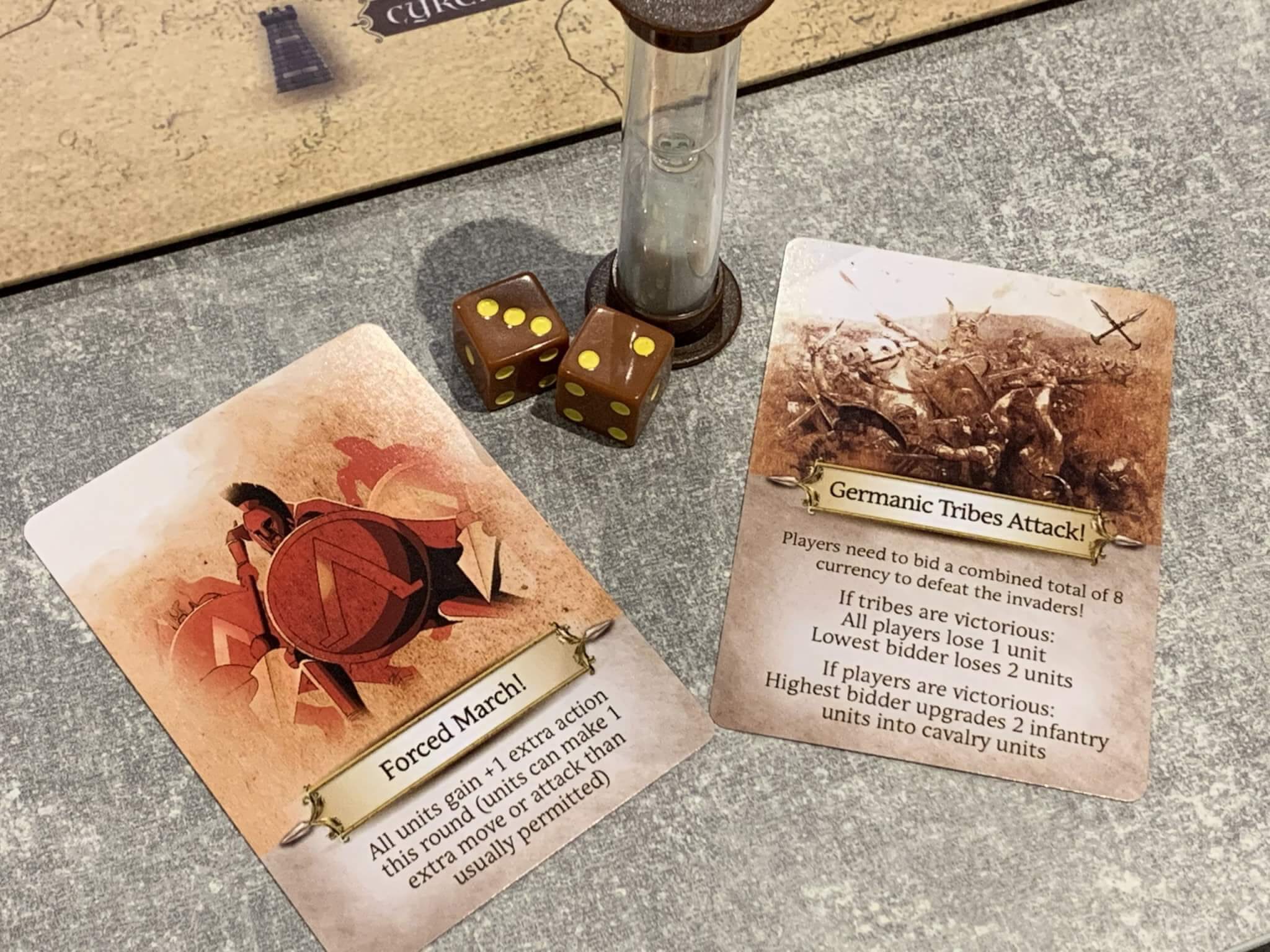
Conqueror: Final Conquest provides a fun, likeable structure that more or less anyone can pick up. It has an honest, straightforward production that includes nicely cut wooden pieces, a clearly laid-out board and some basic cards (but not a lot else). The only problem for me in that respect was the difference in colour between the infantry and cavalry pieces in each army, which was a small let down but understandable given the size of the publisher.
It’s fantastic to see games being produced in regions where we don’t typically see them, and it’s commendable that the designer has been able to inject a somewhat unique and (at least to me) thematic element to the classic empire-building game. With a weight more or less equal to something like Risk, Conqueror: Final Conquest is a game that almost anyone can enjoy, but which will likely appeal to casual gamers most of all.
You can purchase Conqueror: Final Conquest from the developer’s website.

Comments are closed.